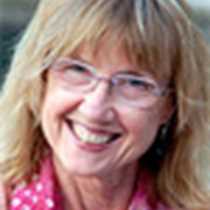Kotor, Montenegro
The view of Boka Kotorska (Kotor Bay) from the monkey deck of the Sea Cloud was breathtaking. In front of us dramatically loomed the immense limestone mountains, dense trees casting a blackish green hue that inspired the Venetians to name this country Montenegro, the name of ‘Black Mountain.’ The weather was uncertain, overcast and raining, but our intrepid passengers were determined to see as much of Kotor Bay as possible.
Our first foray was to the small naval town of Perast, home to sea captains. The narrow mouth opposite Perast was in times of old protected by a large chain which was lowered only when ships could be identified as friend or foe. We took a small boat out to the island where the small church of Our Lady of the Rocks was situated. This is a small, man-made island. As the story goes, a couple of fishermen were out in the bay and saw an icon of the Virgin Mary and Child adrift. The discovery of this icon coincided with a miracle (someone was saved from a shipwreck, or maybe from the plague), so the locals decided to construct an island out of rocks and debris from shipwrecks and build a church dedicated to the Madonna. Every year the locals celebrate fashionada on July 22, when men row out to the island and drop rocks to both symbolically and literally pay homage to the church. Inside we stood in the warm, welcoming chapel decorated with paintings, votive offerings and some modern works of art. Our guides Stefan and Andjelina led us through the several floors of the church’s treasury with artifacts of the past centuries, both sacred and profane. We then visited the Maritime Museum and the Church of St. Nicholas, patron saint of sailors.
We then returned to the old town of Kotor for an orientation walking tour and an introduction into the everyday life of a medieval town. The Lion of St. Mark could be seen throughout testifying to the influence of Venice. The Cathedral of St. Triphon, patron saint of Kotor, is a fascinating structure of competing yet harmonious textures, Byzantine brick and frescoes as well as medieval marble columns. Despite the rain the farmers market was filled with fresh fruit and vegetables as well as cheeses, smoked meats and dried mushrooms (some of which we would find on the menu of the Sea Cloud later that day).
In the afternoon we set out for the mountain village of Njegoši, famed for producing the finest pršt (Montenegrin prosciutto) and the Njegoši dynasty which ruled this small mountain kingdom until 1918. Sharon set out with the photographers for a power walk to the crocuses, while Grace and Tom took the rest for a gastronomical visit to Boško’s smokehouse to sample his pršt, cheese (as well as some wine and grappa). Tom purchased a ham and some cheese for the Sea Cloud. We repaired to a local restaurant for some refreshments and our bus driver demonstrated how to play the gusle and sang a few verses of a traditional Montenegrin epic song. After removing a stowaway puppy from Bus No. 2, we set back down the 26 serpentine switchbacks for an exciting ride back to the port.




